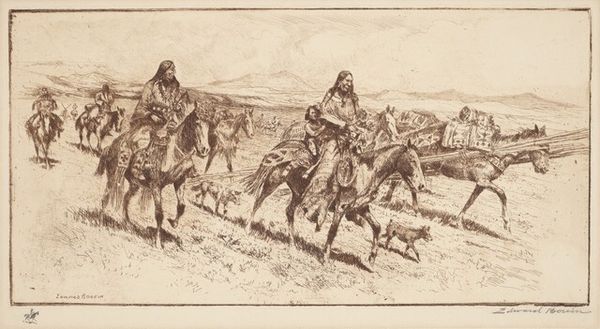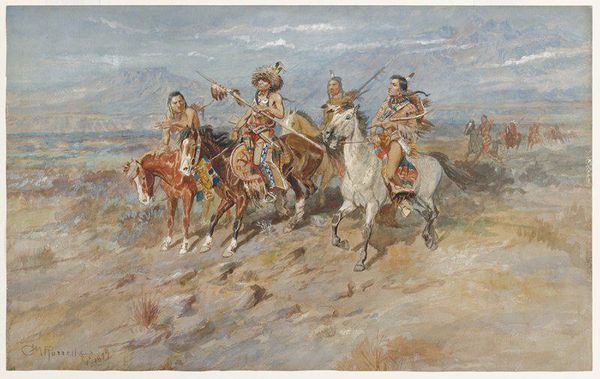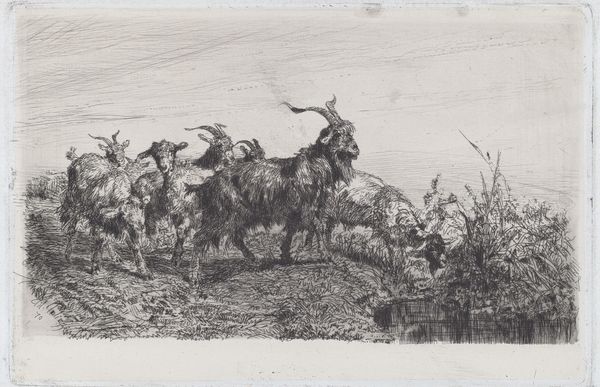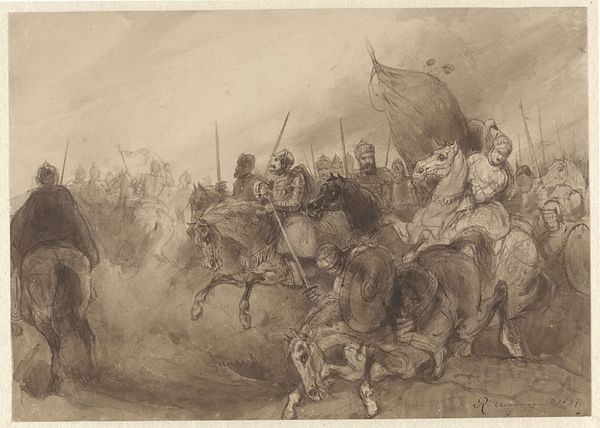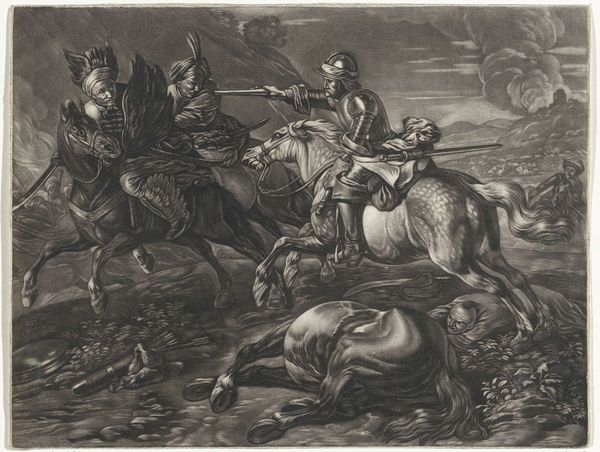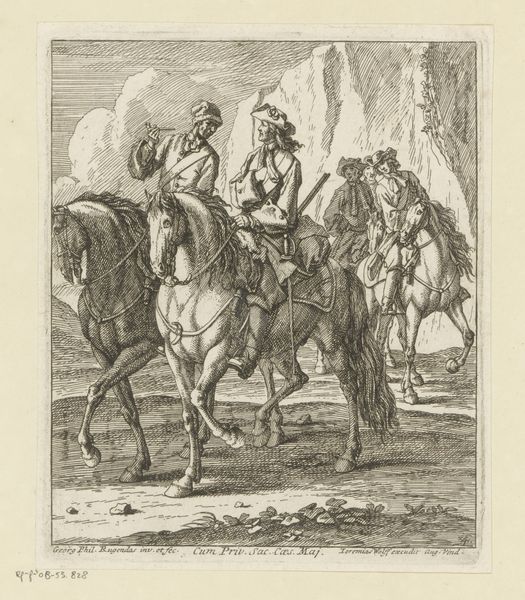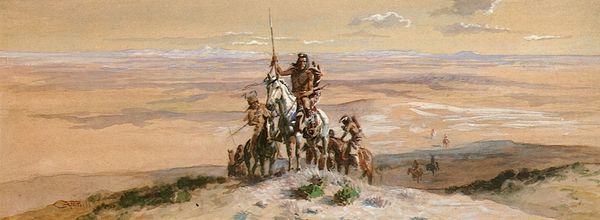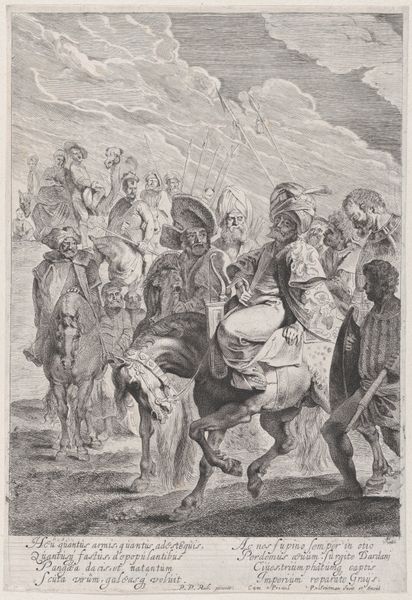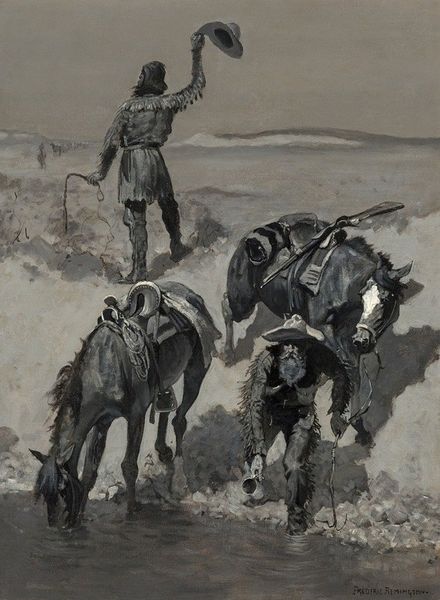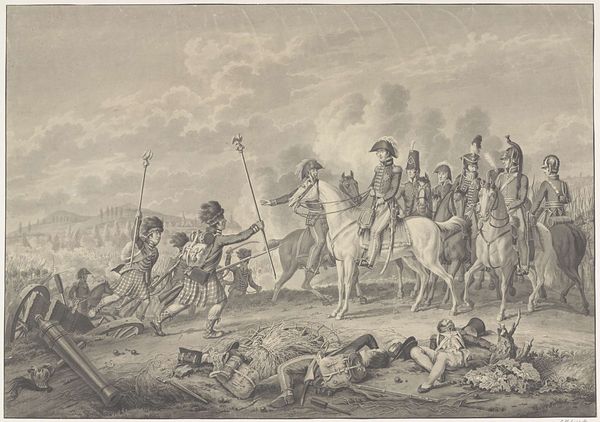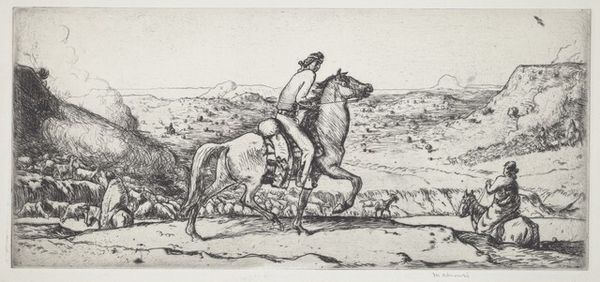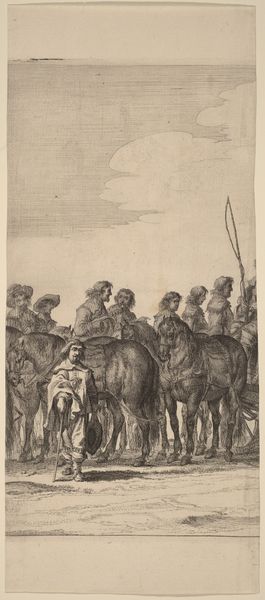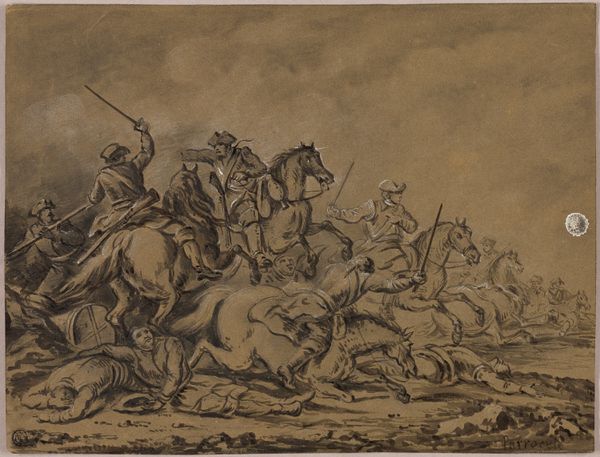
print, etching
#
portrait
# print
#
etching
#
charcoal drawing
Dimensions: Image:201 x 298mm Sheet:296 x 458mm
Copyright: National Gallery of Art: CC0 1.0
Curator: Edward Borein’s etching, “Sioux Chief,” circa 1915, offers a glimpse into a powerful encounter. What’s your take? Editor: Stark. It speaks volumes with so few lines. A landscape of lean means: the lean horses, the lean landscape. You sense scarcity. Curator: Scarcity, yes. Borein masterfully used the etching process. I think about the copper plate laboriously etched to hold the ink and communicate this narrative of the indigenous Americas. Editor: And see, I keep wondering, what was the market for this like at the time? What anxieties was it tapping into to sell prints depicting indigenous peoples on horseback? Who was buying this labor? Curator: It makes you ponder the intended audience, doesn't it? But Borein clearly admired their horsemanship. They're so in command in this work, riding almost seamlessly with the horses. Editor: That connection…it extends to the making, for me. Think of the actual, physical work needed to both break and train those horses. Like the artist working the plate: skilled hand meets difficult, resistant material. Curator: Beautiful parallel. It is interesting how these fine lines are carved and shaped to present power, both aesthetic and cultural. Editor: Definitely, and power produced through collaborative means, across both the human and animal realms, with consequences for our own time. Curator: The material process reflects the social structures that shape the narrative so strikingly portrayed. Something to contemplate! Editor: Absolutely. Now, if only we could find Borein's tools—the burin he held to make this plate. Wouldn’t that be fascinating?
Comments
No comments
Be the first to comment and join the conversation on the ultimate creative platform.
